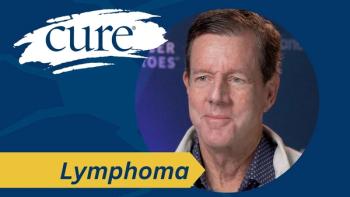
The Naked Truth: Panel Urges Patients to Get Checked from Head to Toe for Melanoma
The panelists acknowledged that many individuals face barriers to receiving regular skin check-ups. Some people – especially those in rural areas – may not have a dermatologist near them. And even if they do make it in to a doctor’s office for a skin check-up, they may not be checked as thoroughly as they should be.
While early detection of melanoma could be life-saving, there is still much work to be done by both patients and physicians to ensure that people are receiving thorough full-body checks at the dermatologist.
At the Melanoma Action Coalition Fall Conference, a group of clinicians, patients, survivors and advocates met to discuss recent updates in the field, as well as what improvements still need to be made.
“Get in for that first exam somewhere between the age of 5 and 10. Then the pediatric dermatologist can make the assessment of how often to see them, depending on what they see. But there’s no harm in starting as early as possible,” said Katherine Steele, M.D., department of Clinical Dermatology at the Hospital of the University of Pennsylvania.
Steele was a panelist on the discussion, along with Naana Boakye, M.D., of Bergen Dermatology and Louise Perkins, M.D., the chief science officer of the Melanoma Research Alliance, who moderated the talk.
The panelists acknowledged that many individuals face barriers to receiving regular skin check-ups. Some people — especially those in rural areas – may not have a dermatologist near them. And even if they do make it in to a doctor’s office for a skin check-up, they may not be checked as thoroughly as they should be, explained Boakye.
“When we do full-body exams, we ask patients to get undressed. We also ask them to remove their underwear. Patients look at us like, ‘Why?’” Boakye said, adding that there is a common misconception that people can only get melanoma in areas that are frequently exposed to the sun. However, not all melanomas are related to ultra violet (UV) radiation, and the disease can happen anywhere — on the skin, in the eyes and in the vaginal and pelvic region.
But there currently are no standards that dermatologists must follow regarding which areas they include in their skin checks. A large part of the equation includes patient and provider comfort level, Boakye said.
“That’s one opportunity to advocate for yourself as a patient and say, ‘Hey, I want to make sure I get a full check from head to toe,’” Steele said.
“Have any of you, in the audience, ever challenged a dermatologist in this way?” Perkins asked. Nods filled the room, though one audience member spoke up and said that by virtue of being at the conference, these individuals were already more aware of the importance to thorough skin checks and catching melanoma early. But that might not be the case for everyone.
When it comes to getting people into the dermatologist in the first place, early education is key, Boakye said.
“In terms of more awareness, we need to start talking to kids and teaching them about moles and sunscreen and skin checks,” she said. “Once you start at the grade-school level, you know that it’s inherent and that this is something you have to do for the rest of your life.”
Then, the panelists also emphasized that patients get to know their bodies, and any possible lesions. They even mentioned that people should take selfies with their moles to make sure that nothing is changing. And if it is, they should see a doctor right away.
Lastly, once one person is diagnosed with melanoma, it is important that all first-degree relatives get thorough skin checks as soon as they can, especially since many melanoma cases are genetic.
“One of the progresses that we’ve been making is identifying some of the different mutations in melanoma, and I’m hopeful that as we learn more about melanoma on the molecular level, that we can better risk-stratify,” Steele said.
In particular, better understanding of the genetic makeup of some melanomas has led to new therapies that emerged in the field in less than a decade.
“The rate of change in melanoma in a short period of time is really dramatic,” Perkins said. “I take great pride in this for us as a field — that melanoma has been a pioneer in the cancer field. Yet, there is much more pioneering that needs to be done.”




